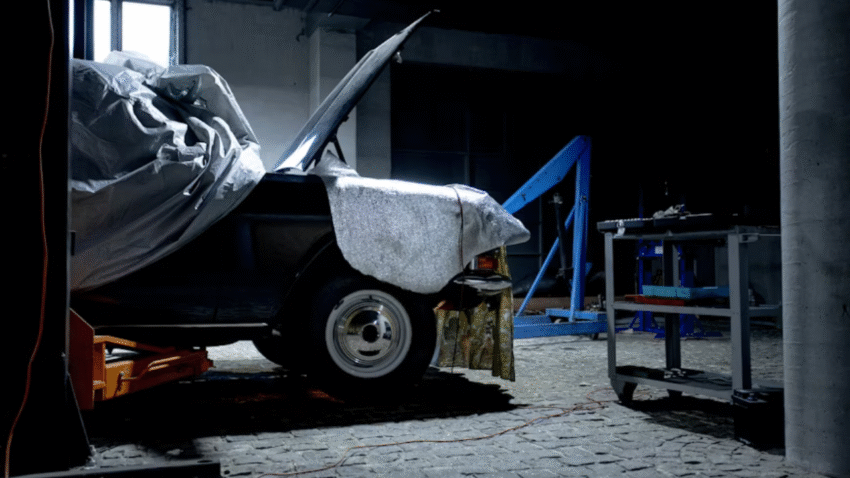Introduction
If you’re a musician, the garage can be the perfect practice space—private, spacious, and separate from the main living areas. But without soundproofing, your music can disturb neighbors, family members, and even your own ability to focus. Learning how to soundproof a garage for music practice ensures you can play without worrying about noise complaints, while also improving the acoustics inside the room for better sound quality.
Why Soundproof Your Garage for Music Practice
A properly soundproofed garage offers several benefits:
- Noise reduction – Keeps sound from escaping and prevents outside noise from interfering.
- Improved acoustics – Enhances sound clarity and reduces echo for better practice sessions.
- Privacy – Lets you focus without distractions.
- Versatility – The space can double as a recording studio or rehearsal room.
- Neighbor-friendly – Avoids complaints from excessive noise.
Step-by-Step Guide to Soundproofing a Garage for Music Practice
1. Assess Your Garage Space
Before you start, examine your garage for:
- Gaps and cracks – Check walls, doors, and windows for any openings where sound can escape.
- Door and wall type – Thin walls and hollow doors will require more treatment.
- Existing insulation – Garages often have less insulation than the rest of the home.
Tip: Stand inside while someone plays music outside (or vice versa) to identify the biggest weak spots.
2. Gather Soundproofing Materials
You’ll need:
- Acoustic panels or foam tiles.
- Mass loaded vinyl (MLV) or soundproof blankets.
- Weatherstripping for doors.
- Acoustic sealant (non-hardening caulk).
- Heavy curtains or moving blankets for windows.
- Door sweep for bottom gaps.
- Insulation batts (if walls/ceiling are unfinished).
Optional: Soundproof drywall (e.g., QuietRock) for maximum noise blocking.
3. Seal All Gaps and Cracks
Sound travels easily through even the smallest openings.
- Apply acoustic sealant around window frames, door frames, and wall gaps.
- Install weatherstripping around the garage door and any side doors.
- Add a door sweep to close gaps at the bottom.
Tip: This step alone can significantly reduce noise leakage.
4. Add Mass to the Garage Door
Garage doors are thin and often the weakest point in soundproofing.
- Hang moving blankets or soundproof blankets over the door interior.
- Attach mass loaded vinyl (MLV) for a heavier, more effective barrier.
- If possible, replace the door with an insulated model.
5. Install Acoustic Panels on Walls
Acoustic panels reduce echo and improve internal sound quality while adding some sound-blocking ability.
- Identify reflection points—usually the walls facing your instruments and speakers.
- Mount foam panels or acoustic boards using adhesive strips or hooks.
- Cover at least 25–50% of the wall area for noticeable results.
For better sound blocking, use soundproof drywall over insulation, then add acoustic panels on top.
6. Treat the Ceiling
If your garage ceiling is unfinished:
- Fill the cavities between joists with insulation batts.
- Cover with drywall or MLV for added mass.
If the ceiling is finished:
- Add acoustic panels or foam directly to the surface.
Sound often escapes upward into the home or outside, so don’t skip this step.
7. Soundproof the Floor
Concrete floors reflect sound and create harsh reverb.
- Lay down thick rugs or carpets to absorb sound.
- For extra isolation, use interlocking foam mats or a raised platform with insulation underneath.
Tip: A carpeted floor not only helps with sound but makes long practice sessions more comfortable.
8. Treat Windows (If Any)
Windows are a common source of sound leakage.
- Hang heavy blackout curtains or soundproof drapes.
- Add window inserts for an airtight seal.
- For recording-quality sound isolation, use MLV curtains or double-pane upgrades.
9. Consider a Room-Within-a-Room Setup
For the ultimate soundproofing:
- Build a secondary wall and ceiling inside the garage, creating an air gap between the original walls.
- Use staggered studs and double layers of drywall for maximum noise blocking.
This is more labor-intensive but offers professional-level sound isolation.
10. Arrange Your Equipment Strategically
- Position loud instruments (like drum kits) away from doors and windows.
- Face speakers inward toward walls with acoustic panels.
- Use isolation pads under amps to reduce floor vibration.
Common Mistakes to Avoid
- Using only foam for soundproofing
- Mistake: Thinking acoustic foam stops sound from leaving the garage.
- Solution: Combine foam with mass-increasing materials like MLV or drywall.
- Ignoring the garage door
- Mistake: Treating only walls but leaving the door untreated.
- Solution: Add blankets, MLV, or replace with an insulated model.
- Skipping ventilation considerations
- Mistake: Completely sealing the garage without airflow.
- Solution: Use soundproof vents or baffle boxes to maintain ventilation without noise leaks.
- Not addressing low-frequency noise
- Mistake: Overlooking bass frequencies from drums or amps.
- Solution: Add bass traps in corners to absorb low-end sound.
- Poor panel placement
- Mistake: Randomly placing acoustic panels.
- Solution: Target first reflection points and high-echo areas.
Extra Garage Music Room Tips & Hacks
- Use a portable vocal booth for singing or recording to reduce echo.
- Add bass traps in upper corners to control low-end build-up.
- Install dimmable LED lighting for a comfortable practice atmosphere.
- Label your power outlets if you’re running multiple amps or electronics to prevent overload.
- Related read: See our guide on adding a portable power station to your garage for uninterrupted music sessions during outages.
Conclusion
Soundproofing your garage for music practice transforms it into a dedicated, professional-feeling rehearsal space while keeping the peace with your neighbors. By sealing gaps, adding mass, treating surfaces, and arranging your equipment strategically, you can drastically cut noise leakage and improve sound quality inside. Whether you’re a drummer, guitarist, vocalist, or multi-instrumentalist, these steps will help you create a comfortable and private practice space.
Pro Tip: Start with the most significant noise leaks—garage door, windows, and walls—before adding finer acoustic treatments. This ensures you get the biggest improvement for your investment.
